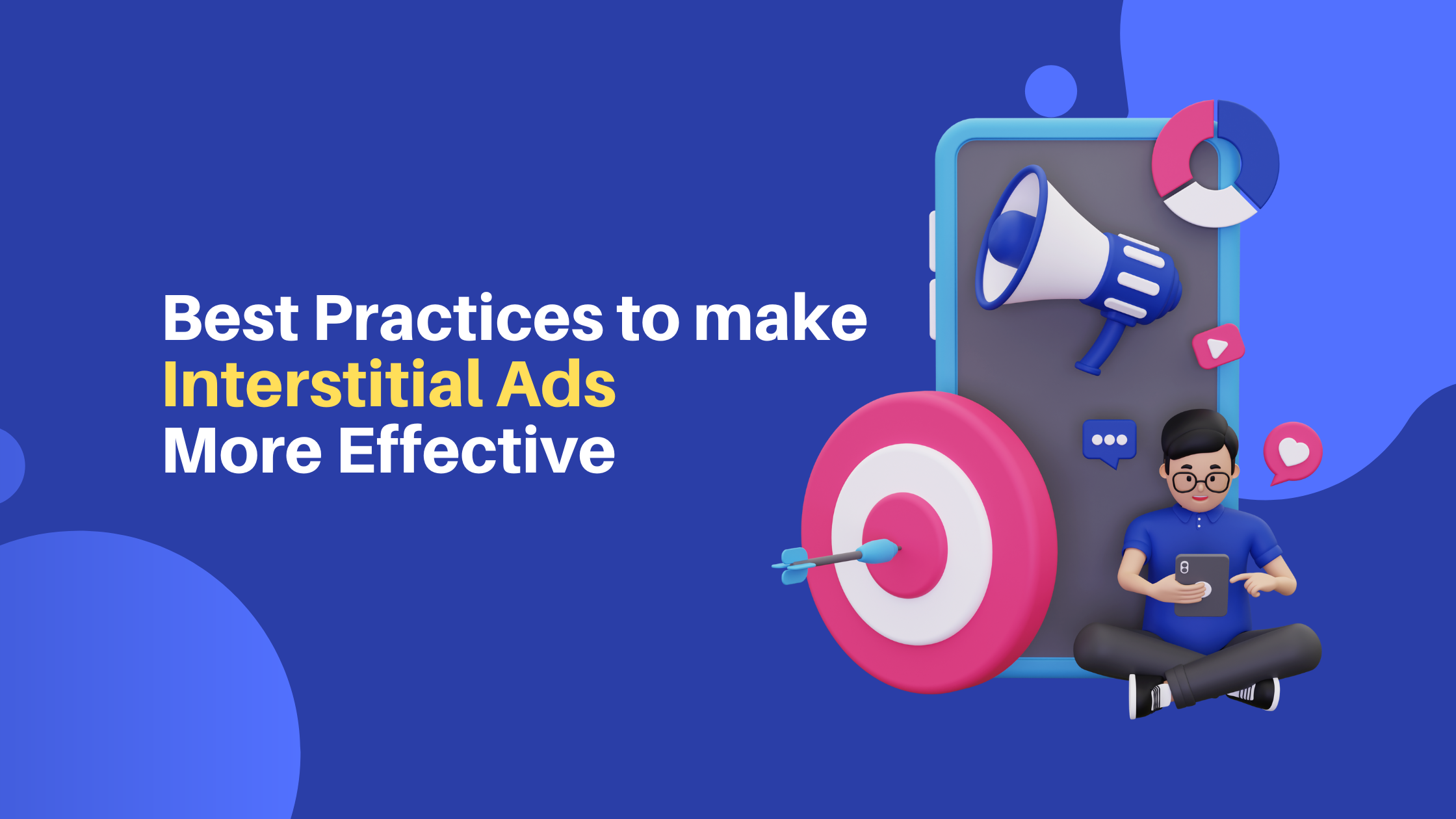Top 7 Best Practices to Make Interstitial Ads More Effective

Interstitial ads provide rich interactive ads to mobile app consumers. Interstitial ads, designed to be placed between content, work best when placed at natural app transition points. As interstitial ads are unavoidable to increase the ad revenue, proper App monetization strategies have to follow to increase the app ad revenue. Also, Google is quick to punish interstitial adverts that do not get presented at natural transition points, mobile app marketers must use caution when integrating interstitial ads.
Interstitial ads, when used correctly, could assist publishers in generating:
- 100% viewability
- Increased click-through rates (CTR)
- Increased revenue
- & Improved engagement
- High CPMs (Cost-per-mille)
To make Interstitial ads more effective, following Google’s implementation guidelines and these best practices can go a long way in aiding publishers:
Top 7 Interstitial Ads Best Practices
1. Place with caution
As an app publisher, one must consider the placement of interstitial ads when there is a wait time within the app.
2. Think about frequency capping
Publishers must encourage frequency capping and ensure that limitations get imposed correctly. You don’t want to show interstitial ads at every step or action the user takes.
3. Pay attention to ad readiness
The loading time of the ad, which occasionally occurs with interstitial ads, might impact the user experience. When the interstitial ad is activated, there can be minor delays, which generally occur after the user selects an action.
4. Emphasise user experience
Always prioritise user experience by ensuring that interstitial ads do not appear immediately after the user starts the app or just before the user gets ready to click the ‘next’ button, which may result in an unintentional click and invalid traffic.
5. Use a clear close button
Interstitial ads must have a visible close or exit button.
6. Go with the flow
When inserting interstitial ads within the mobile app, consider how they will complement the natural flow of user engagement. Surprising users, presenting them with too many ads, or interfering with their app usage may result in a bad overall user experience, an increase in unintentional ad clicks, and eventually, drive users and advertisers away from the app.
7. Avoid interstitial ads that:
- Appear immediately after launching the app.
- Occur frequently
- Repeat after each action taken by the user.
- Do not show up at a natural transition (ex: while the user is
browsing or buying a product)
- Cover the main page
Conclusion
Should interstitials be used? The answer depends on the publisher and the network or monetization partner with whom they collaborate. Ads, particularly interstitial ads, must balance income generation and user experience.
If/when publishers work with an app monetization partner like AdPumb, where we employ best practices, interstitials may be a massively lucrative and effective way to display ads. AdPumb offers the best and most relevant ad types to help maximise ad revenue with tried and tested ad mediation techniques. As Google Partners, we take publishers through Google’s rules and suggestions to avoid penalties and get the most out of each ad style! For more, subscribe to AdPumb right now!






